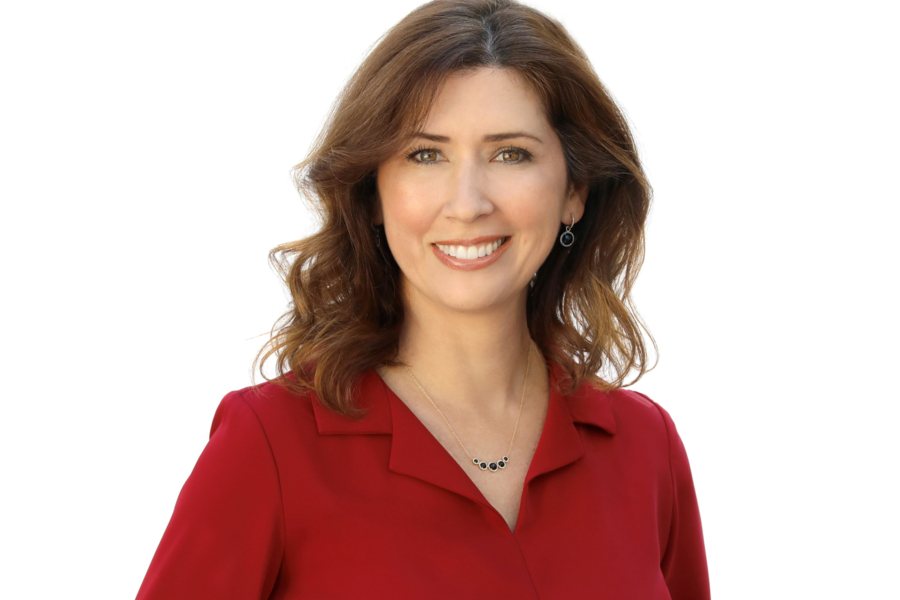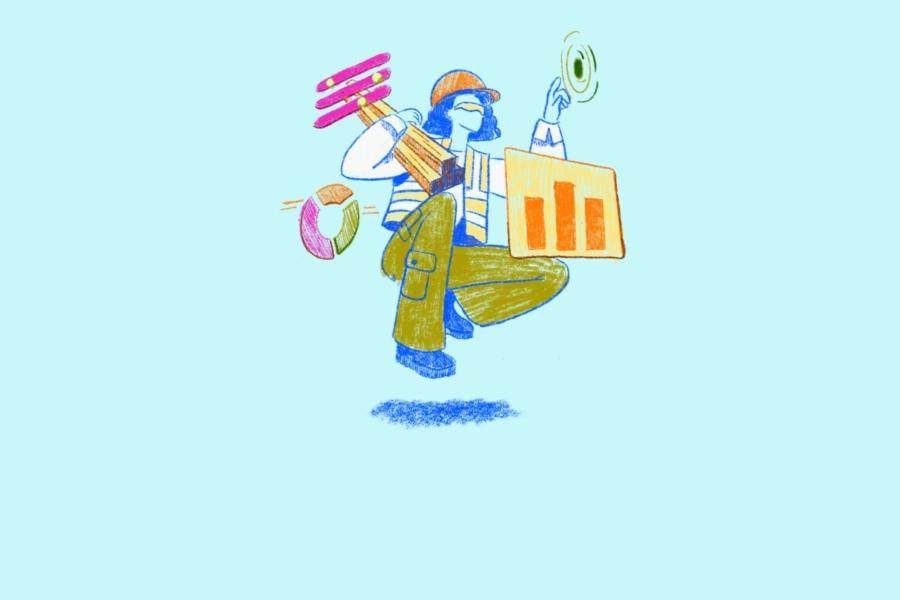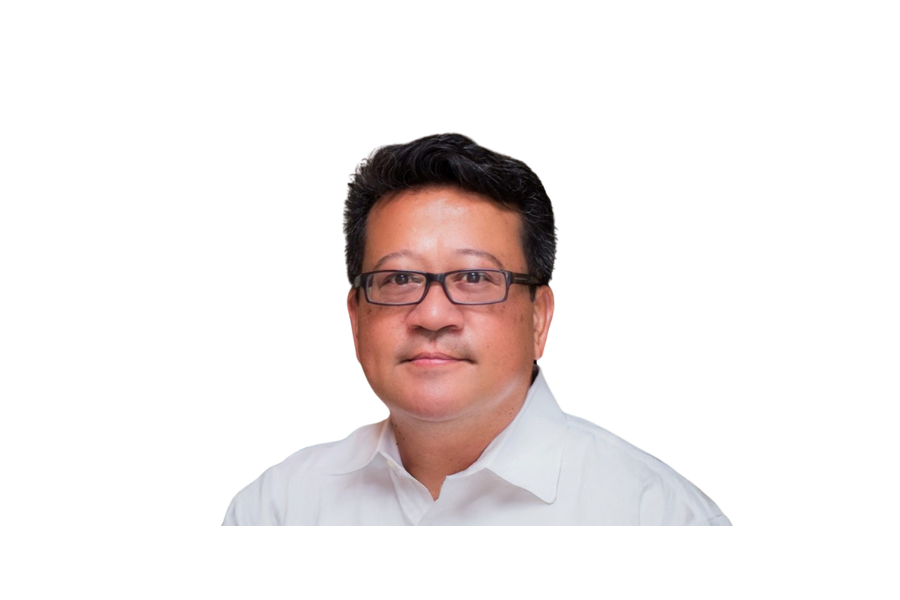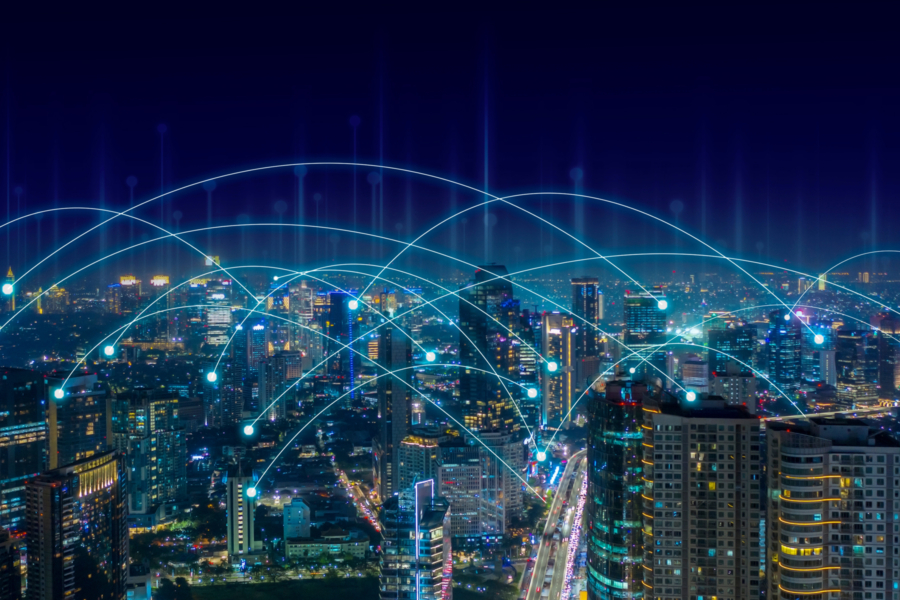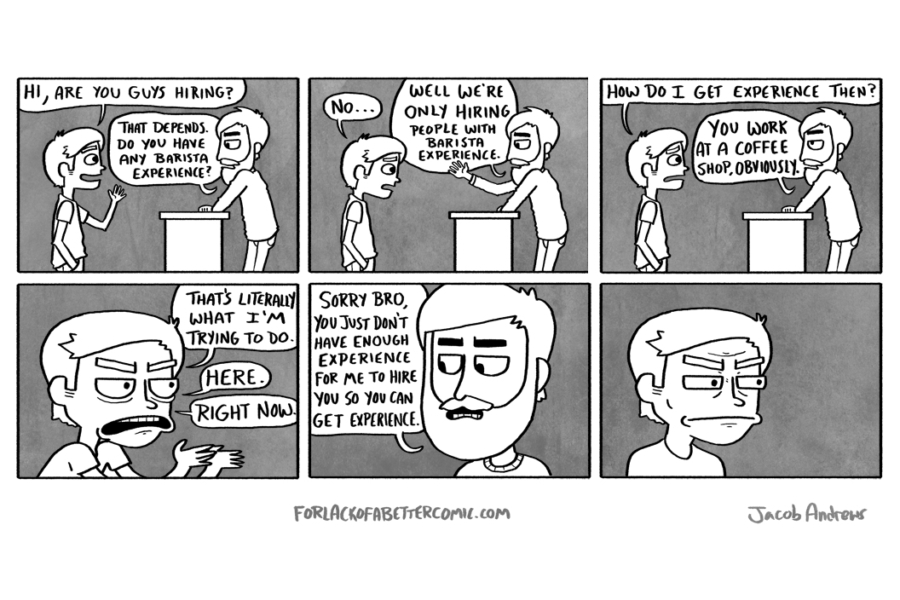Key Takeaways:
- Maintaining and building workplace culture requires intentionality and communicating expectations. Wells Fargo has a site leader program that allows them to personalize culture, based on campus.
- Teaching managers how to be better sponsors is critical to helping internal career mobility.
- Employee Resource Groups should be living, evolving organizations. Leaders need to listen to employees and hear about what would make ERGs successful for them, and for the company.
For this edition of People Matters, we are excited to interview Kimberly Bertz, Head of DEI Strategy & Employee Affairs at Wells Fargo, where she leads global vision, strategy, and execution for employee-focused DEI efforts. Kimberly has spent the last decade at Wells Fargo in a range of roles, including serving as the Global Head of Workplace Services & Experience during the global pandemic.
In this interview, Bertz shares how she led Wells Fargo’s return-to-work initiative, how she thinks about building and maintaining workplace culture, and tips for how to make sure Employee Resource Groups are successful.
This interview was edited for brevity and clarity.
Can you share your journey into diversity, equity, and inclusion work?
I started my consulting career in the human capital and strategic change practice because I had an interest in figuring out how to manage and lead change in a company. Driving change is incredibly challenging and complex but also rewarding, and it’s given me exposure to many different aspects of running a business.
Over the last few years, I gained a particular interest in work experience and how it can really unlock the potential for companies to be more successful, nimble, and more innovative. So, I launched the Workplace Experience team where we pulled together teams from corporate real estate, HR, information technology, marketing, and more to drive initiatives.
One thing that emerged as we started on the work was that workplace experience should really be employee experience. If you put the employee at the heart of the strategy, it helps frame the “why.” And that helps provide clarity around the important questions to solve for, such as: What are the guidelines for employees? What are the processes employees need to know and understand? What do we need to deliver for employees to be successful and thrive? And how does the physical space need to look and function? That’s ultimately how I’ve moved over into the DEI team, with a focus on employee affairs.
Could you share one or two innovative programs or initiatives that you’ve taken on while at West Fargo that you feel really proud of?
I think it’s really cool how we’re positioning DEI to work in support of employee engagement and experience. We’ve done a lot of work to listen and understand employee needs and aspirations, and to look at the data — including human capital data and how people are self identifying.
It’s also important to look at broad business data. Where are we? Where are our strong labor pools? Where are the diverse labor pools in the country? Where is our business and where are our customers? We’re not just working based on gut instinct, right? We’re using all of this insight to inform the work, how we structure and prioritize our initiatives.
Another area that has been really cool and fairly innovative is how we’re developing measures and scorecards around the DEI work so that when we say employee experience is important, it’s something we measure and can show demonstrable progress.
You led a lot of Wells Fargo’s return-to-work initiatives after the pandemic. How did you balance different stakeholders and priorities throughout the process?
For us, employee safety was critical. The first thing we focused on was pulling in the right experts and partners to educate us on the emerging science and safety measures, and to ultimately help us make the right decisions for employee safety.
We have a very strong retail presence with our branch network, so we needed to bring in new health and safety measures that would allow our people to be safe in the workplace so that they could confidently serve customers. People still needed to bank. They needed to be able to get cash. Life needed to move on. It just needed to look different.
As the pandemic went on, we spent a lot of time thinking about what work needs to look like, and where it happens. A big question emerging was what the hybrid environment would look like. Ultimately we needed to understand our employee base and how they work. A branch employee who is serving customers at a teller line has an inherently different experience from a contact center employee who is on the phone all day. We segmented the employees into five different categories, and then we could really start planning based on those employee types. For example, how would HR processes need to differ to best support each segment? What are the workplace experience and accommodations and physical setup that we need? What does social distancing look like? What are the health mandates that need to be in place for people to be safe?
What are some of the things that you all have learned about how to maintain culture, especially in a hybrid or remote environment?
The first and foremost thing about maintaining culture is to be intentional, to communicate and have very clear expectations. We’ve also implemented a few other things that are really important. For example, we have a new role called site leaders in our major campus areas. This senior leader is really becoming the face of the market and a culture carrier. They have a team supporting them to understand different things that are popping up in the market, or to host cool activities and opportunities to bring employees together.
We have employees in so many different markets in the U.S. and internationally, so it’s super important to create a sense of community with the people around you. Our Employee Resource Groups are also critical to helping advance that culture as well.
Let’s talk about diversity more broadly. What practices have actually moved the needle on the numbers and worked well?
Diverse representation is one really important part of what we measure. But we also focus on the culture in the company, of delivering an inclusive workplace. Do I feel that sense of trust and sense of belonging with my team and manager? It’s important for us to set goals, and then measure. That’s how we see if we’re moving the needle.
So a couple of things we have are senior-leader goals around diverse representation. We need to drive this conversation through learning and support. In some cases, it’s through the required training. But more often, the learning happens outside of the required modules.
It’s important to make sure that our hiring processes allow for diverse employee screening slates and diverse candidate slates. All roles don’t necessarily need or meet this requirement, but on the whole it’s important to make sure we’re thoughtful and challenging ourselves to invite diverse perspectives and candidates into the hiring process, as this is how we maximize innovation.
Also, keeping employees is critical, so we’re focusing on internal career mobility. How do we encourage people to move across the company into different roles and businesses? We don’t want people to have to look elsewhere for their next role; we want them to stay and find opportunities to build a career at Wells Fargo. We have formal sponsorship programs now, and we’re also teaching managers and leaders how to be better sponsors which also creates more mobility and retention. Ultimately, there is a cost and knowledge savings to the company by keeping and growing our people, and not having to rehire. It creates this virtuous cycle that’s good for the business.
What are some specific tips or tactics that can make ERGs really impactful, especially at large enterprises?
We have a strong, central-led ERG program with clear priorities, so that all 10 of our Groups are aligned on a purpose, and on serving their members. We provide support, guidelines, and governance. Another thing that is tremendously impactful is simply talking to people, understanding what employees are looking for from the ERG experience. From last year’s pulse survey, we learned our members are seeking connection to the community, opportunities to network, and connections to senior leaders to enhance career mobility. That’s a beautiful insight so we know what to deliver. It helps us make sure that the ERGs are living, evolving organizations that are actually going to meet employee needs.
When you’re not thinking about DEI and employee affairs, how do you enjoy your time?
I have two young daughters, and we’ve really enjoyed getting back to live community events in the last year! It’s so inspiring to see a live concert at the Hollywood Bowl, or see a movie in the theater with an audience all around us. It’s fun to be out and experience our Los Angeles community!

